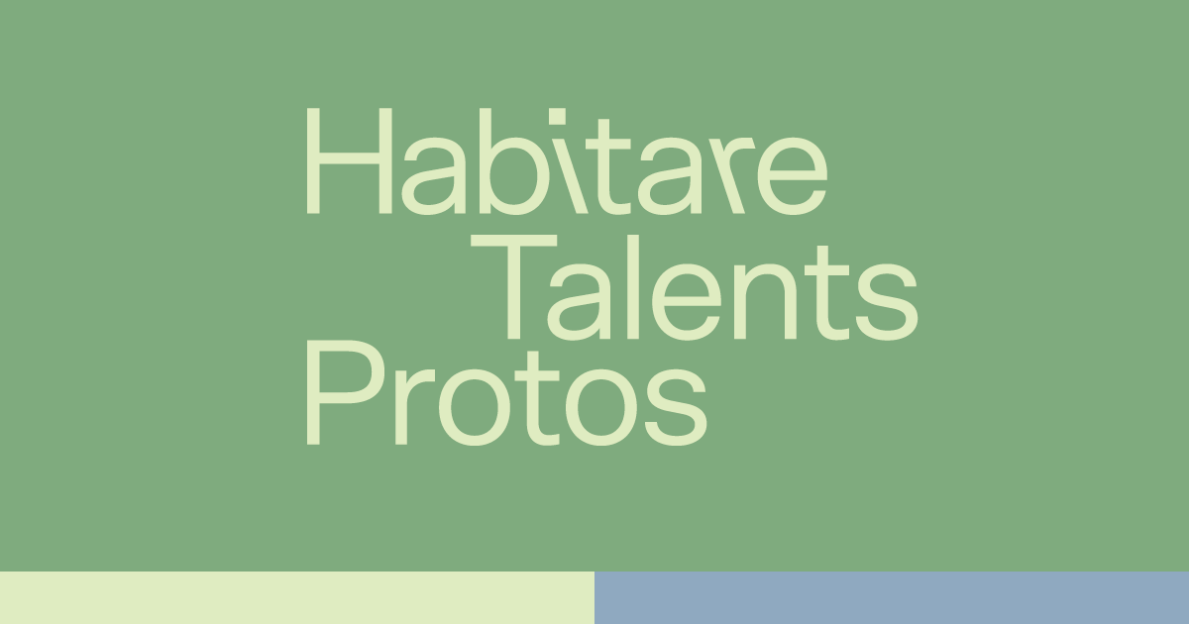The Habitare 2025 themed exhibition to be designed by the architecture studio Collaboratorio, a trailblazer in ecological design

The themed exhibition, to be featured as part of Habitare in 2025, will be designed by the architecture studio Collaboratorio. Founded by Martino De Rossi and Kristiina Kuusiluoma, the studio is known especially as a trailblazer in ecological design and construction. Habitare, the leading furniture, design and interior decoration event in the Nordic countries, will be held at the Helsinki Expo and Convention Centre from 10 to 14 September 2025.
The theme of Habitare 2025, Touch, addresses our human need to experience, touch and feel things. The theme calls for a multi-sensory exploration of spaces, harnessing genuine curiosity as part of our experience, and discovering emotion in surfaces.
“The sense of touch is crucial when it comes to our experience of buildings and spaces – whether we are talking about a rugged clay wall or floor, or a natural-stone or solid-wood floor. We see the theme of Touch as an opportunity to highlight the human and physical dimensions of materials and the users’ interaction with the materials”, say Martino De Rossi and Kristiina Kuusiluoma.
The architects’ idea is to use the themed exhibition to illustrate how controlled incompleteness can create a foundation for life and experience.
“We would like to offer a display of exhibits to appeal to all the senses, originating from Finland and from around the world: science and art, touchable beauty, ecological and less-processed material solutions. Under the theme of the exhibition, we explore, for example, moral ambition, ethics, recyclability and reusability.”
Founded in 2016 by De Rossi and Kuusiluoma, Collaboratorio is known for promoting ecological construction and a material-based approach to design.
"We think that the challenge is not that people love materials too much but that people love and respect them too little. As architects, we are driven by materials. Our projects demonstrate the interaction of materials – combining rough and smooth, heavy and light. We draw inspiration from traditional techniques and local materials”, say De Rossi and Kuusiluoma.
The architects’ interest in ecological construction started from frustration with the carbon footprint of mainstream construction and the disposability of materials. In practice, the inspiration and impetus to set up their own studio came from their 2015 project in Tulum, Mexico, for which they designed holiday homes made of local clay and wood. While working on the project, they studied the local use of clay walls and palapa roofs.
“We had no choice but to set up our own office. At the time, in 2015, ecological thinking was not yet that common.”
A design philosophy of simplicity, sensory material interaction, and ecological ethics
The design philosophy of Collaboratorio is based on simplicity, the sensory interaction of materials, and ecological ethics.
“Our design process brings together naturalness, traditional solutions and modern innovations. We also believe in humility in the face of the principles of building physics – for us, beauty and function start with a well-designed foundation or eaves. Collaborating with customers who have a deep desire for ecological construction inspires us and yields the best results”, say De Rossi and Kuusiluoma.
If there is a material missing, it will be self-developed. One such material is luonnobetoni (‘natural concrete’), which De Rossi and Kuusiluoma have been developing as an alternative to traditional concrete, which has a high environmental impact.
The scope of Collaboratorio’s projects is wide, ranging from small furniture, such as the Cubile bed, and detached houses to large schools and blocks of flats, such as the recently completed Kuokkalan Kalon ‘housing reform’ residential block in Jyväskylä.
“The most memorable projects are ones in which our clients share our passion for ecology and beauty, such as the renovation of a flat in Padua, or Villa Koppar, where a young couple requested the build to be as eco-friendly as possible”, say De Rossi and Kuusiluoma.
Ecological construction requires an in-depth understanding of materials and their interactions. It enables the creation of sustainable and aesthetically appealing spaces that benefit people and the environment.
“For us, ecology means naturalness – rather than high-tech thinking – in which the end product emerges from choosing the right materials and simple solutions. The palette of ecological materials is narrower, but this, on the other hand, may even make a designer’s work easier, by bringing clarity and a focus on the essential. Our major challenges at the moment are prices and certifications, because high-emission materials, such as concrete, are far too cheap, with the emissions not yet reflected in the prices”, say De Rossi and Kuusiluoma.
collaboratorio.fi I @collaboratoriohelsinki
More information:
Pia Sievinen, communication & brand, Habitare, pia.sievinen@messukeskus.com, +358 40 559 9155
Images of the Habitare 2025 can be downloaded here.
Habitare, the leading furniture, design and interior event in the Nordics, will next be held at the Helsinki Expo and Convention Centre from 10 to 14 September 2025. | habitare.fi | @habitarefair | #habitare2025




